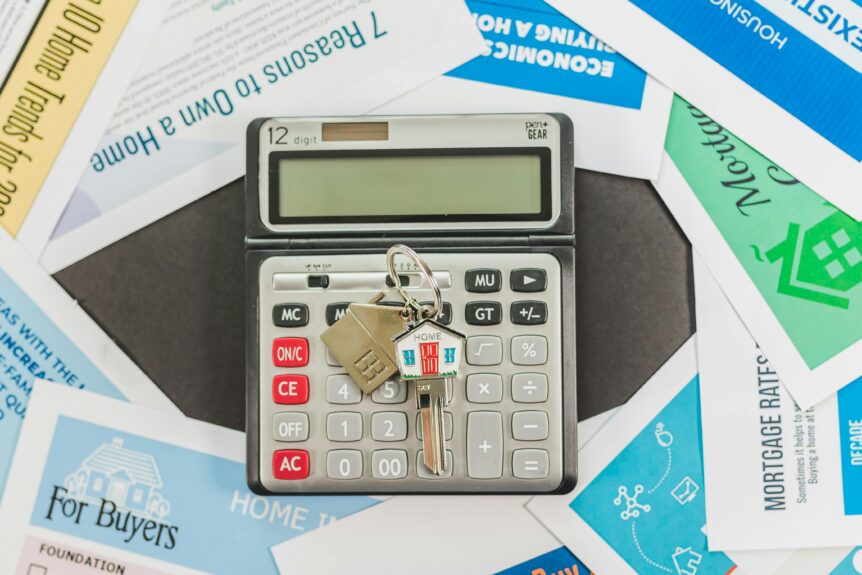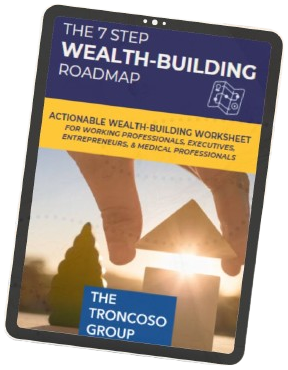Many of our clients who own a home ask about the smart use of debt to maximize the growth of their other assets. In addition to the different strategies for financing and refinancing your home, there are also ways to leverage the equity in your home for a loan to make improvements to your home or for other uses.
One of these solutions is the Home Equity Line of Credit (HELOC). HELOCs are popular for financing home renovations, consolidating debt, or covering major expenses.
This article will explore how HELOCs work, their interest structure, and whether they use compound or simple interest. By the end of this guide, you’ll have a clear understanding of how HELOCs function, whether they are right for you, and how to make the most of them.
What Is a HELOC?
A Home Equity Line of Credit (HELOC) is a type of revolving credit line secured by your home’s equity. Unlike a traditional loan, where you receive a lump sum upfront, a HELOC allows you to borrow as needed within a specific draw period, usually 5 to 10 years.
During this time, you have the flexibility to withdraw funds, repay them, and borrow again, up to your credit limit. Once the draw period ends, the repayment phase begins, typically lasting 10 to 20 years, during which you repay both principal and interest.
Many people find HELOCs appealing because they offer flexibility and generally lower interest rates compared to credit cards or personal loans.
Homeowners use HELOCs for various purposes, such as funding education, starting a business, or managing unexpected expenses. Some of our physician clients with high student loan debt balances may even use their HELOC to consolidate high interest-rate student loans.
How Does Interest Work on a HELOC?
A HELOC typically has a variable interest rate tied to a benchmark like the Prime Rate, SOFR, or, less commonly, Treasury rates or lender-specific base rates. The most common interest structure for a HELOC is the Prime rate + margin, with the margin being a fixed amount that is added to the variable rate.
Unlike a fixed-rate loan, your monthly payments may vary as the interest rate changes, which can make budgeting more challenging. Fixed-rate HELOCs are not as common, but some lenders also offer them as an option.
Do HELOCs Compound Interest?
HELOCs typically use simple interest, meaning interest is calculated only on the outstanding balance and does not compound. Lenders usually determine interest based on the average daily balance but apply the charge monthly.
In contrast, mortgages generally use compound interest, which means interest accrues on both the principal and any unpaid interest, typically compounding monthly. This is why it may be a good idea to consider refinancing your mortgage in a low interest-rate environment.
This key difference between simple and compound interest makes HELOCs more cost-effective for short-term borrowing, while mortgages, due to compounding, result in higher overall interest costs over time.
Are HELOC rates fixed or variable?
While most HELOCs have variable rates, some lenders offer fixed-rate options for added stability. Fixed rates may come with higher initial costs but provide predictability in your payments.
So what determines what your interest rate might be when you apply for a HELOC?
Factors That Impact HELOC Interest Rates
Several factors influence the interest rate on a HELOC:
- Credit Score
Higher credit scores often qualify for lower rates. Maintaining a good credit score demonstrates financial responsibility, which lenders reward with favorable terms. - Loan-to-Value Ratio (LTV)
The amount of equity you’ve built in your home affects your borrowing limit and interest rate. Lenders typically allow you to borrow up to 85% of your home’s value, minus any existing mortgage balance. - Economic Conditions and Market Rates
HELOC rates are tied to rates (such as the Prime rate) that fluctuate based on market trends. Monitoring these trends can help you anticipate rate changes.
Understanding these factors can help you negotiate better terms and make informed decisions about using leverage as part of your financial plan.
How Is Interest Calculated on a HELOC?
To give you a better understanding of how HELOC interest works, let’s break down the daily interest calculation process:
- Determine your outstanding balance.
- Multiply the balance by the annual interest rate.
- Divide the result by 365 to get the daily interest amount.
For example:
If your outstanding balance is $20,000 and your annual interest rate is 6%, your daily interest would be:
Daily Interest = (20,000×0.06) / 365 = 3.29
This means you would accrue $3.29 in interest per day. Over a month, this could add up to approximately $98.70 in HELOC payments, depending on the number of days in the month and your balance fluctuations.
By paying down your HELOC balance promptly, you can minimize the interest costs over time.
Pros and Cons of HELOCs
By leveraging the equity in your home, a HELOC allows you to borrow as needed, often at lower interest rates than credit cards or personal loans. However, like any financial product, it comes with both advantages and potential risks.
Advantages of HELOCs:
- Flexibility: Borrow only what you need, when you need it. This makes HELOCs ideal for projects or expenses with variable costs.
- Lower Interest Rates: Often cheaper than credit cards or personal loans, HELOCs provide a cost-effective borrowing solution.
- Tax Advantages: Interest may be tax-deductible if used to substantially improve your home (check IRS rules or speak with your tax advisor for more detail).
Disadvantages of HELOCs:
- Variable Rates: Payments can increase if interest rates rise, making it harder to predict your monthly costs.
- Risk of Foreclosure: Your home serves as collateral, which means failing to repay could result in losing your property.
- Fees: Some HELOCs have annual maintenance fees or closing costs, which add to the overall expense.
Carefully consider these pros and cons to determine whether a HELOC aligns with your financial goals.
People Also Ask: Common HELOC Questions
Do you need an appraisal for a HELOC?
Yes, most lenders require a home appraisal to determine your property’s current value. This ensures that the equity in your home is sufficient to secure the loan.
What disqualifies you for a HELOC?
Factors like low credit scores, insufficient home equity, or a high debt-to-income ratio can disqualify you. Meeting lender requirements is essential for approval.
Does a HELOC affect tax returns?
Interest paid on a HELOC may be tax-deductible if the funds are used for home improvements. Consult a tax advisor for specifics to maximize your deductions.
Final Tips for Managing a HELOC Effectively
A HELOC can be an excellent financial tool when used wisely, offering flexibility and lower interest rates compared to other borrowing options. However, managing a HELOC effectively requires attention to detail and planning.
Here are some tips to help you make the most your HELOC:
- Automate Payments: Avoid missed payments by setting up automatic transfers. This ensures you stay on track with your repayment schedule.
- Pay More Than the Minimum: Reduce your principal faster and save on interest. Even small additional payments can make a significant difference over time.
- Track Rate Changes: Stay informed about changes in the prime rate to anticipate payment fluctuations. Adjust your budget accordingly to manage potential increases.
Implementing these tips can help you maximize the benefits of a HELOC while minimizing financial risks.
If you’re unsure about whether a HELOC is right for you or need guidance on other financial planning decisions, our financial advisors in Tampa are here to help you navigate your options and ensure your financial goals are met. Click here to schedule a call with one of our financial advisors today.




